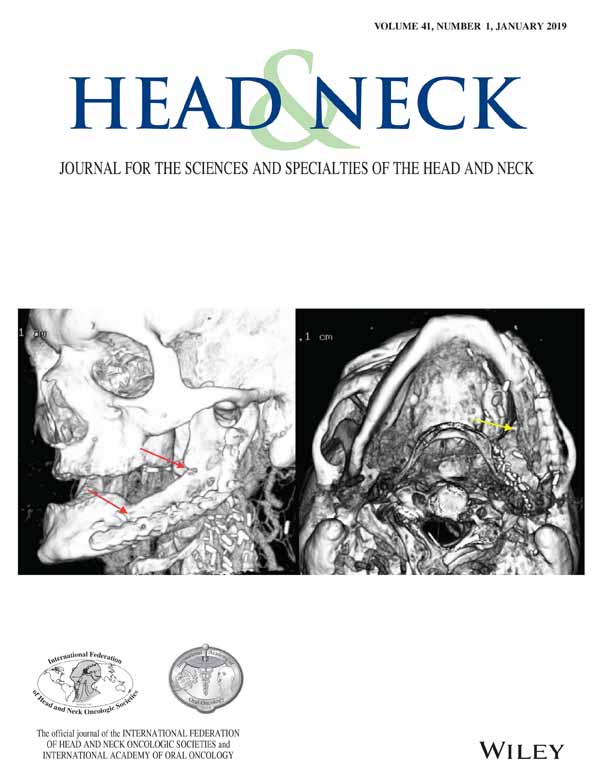Long-term changes in vocal function after supracricoid partial laryngectomy with cricohyoidoepiglottopexy for laryngeal cancer
Abstract
Background
The purpose of this study was to assess changes in vocal function over time following supracricoid partial laryngectomy with cricohyoidoepiglottopexy (SCL-CHEP).
Methods
A total of 17 patients who underwent SCL-CHEP for laryngeal squamous cell carcinoma between 2007 and 2015 were reviewed. We examined maximum phonation time (MPT), mean airflow rate (MFR), voice intensity, the grade, roughness, breathiness, asthenia, and strain (GRBAS) scale, Voice Handicap Index-10 (VHI-10), and voice-related quality of life (V-RQOL) scores. To assess changes over time in these parameters, we set 3 evaluation periods after surgery: within the first 12 months (term A), 13-36 months (term B), and after 37 months (term C).
Results
The mean MPT, MFR, G and B GRBAS subscale, VHI-10, and V-RQOL scores improved significantly over time postoperatively.
Conclusion
Multiple vocal function parameters improved significantly with time due to self-adaptation to a newly created glottis after surgery.




